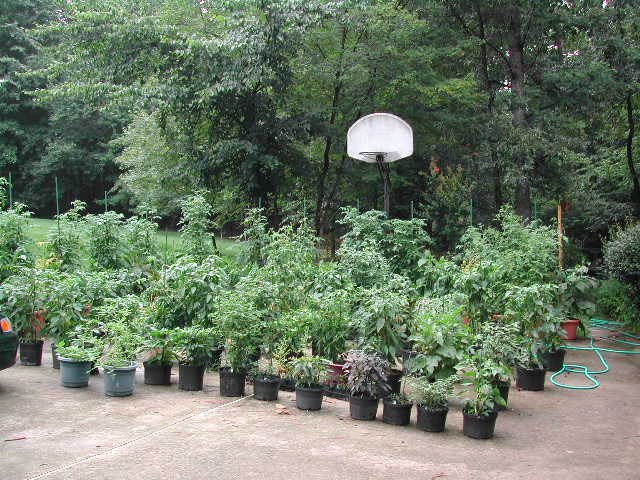finishing up the huge job of seed request fulfillment
By Sunday, all seed requests will be fulfilled and on their way (the Sunday packed will be in the Monday mail). It is a very wide array of seeds being sent out, which really depletes my stores (which is absolutely fine - I will be doing more seed saving this coming garden season).
Quite a few requests involved a first look at some of my recent crosses. Rather than answer everyone’s emails individually with how to proceed, this blog will be a general guide to the material I’ve sent out.
Sun Gold F1 X Captain Lucky F1 hybrid - Captain family - I made this cross last summer - pollen of Sun Gold onto a flower of Captain Lucky. I don’t have many seeds - people are receiving 1 or 2 seeds - that will be enough to take a look at the hybrid and save lots of seeds. Only one plant is needed of this hybrid. I grew the hybrid late last summer and it produced large pale orange cherry tomatoes, most of which I had to ripen indoors. I am going to regrow the hybrid this year for lots of seed saving. I didn’t taste this last year. The hybrid plant should be regular leaf.
Sun Gold F1 X Captain Lucky F2 - Captain family - my seeds are from the late planted hybrid from last year - the indoor ripened seeds from about 8 tomatoes are quite small - I am sending out around 5 seeds to each person who requested - that’s all I can supply. I have no idea what germination will be like. 25% of the seedlings will be potato leaf. Interesting results could be on either regular or potato leaf plants. I look forward to hearing what people find - I hope to grow a few plants myself.
Cherokee Purple X (Dwarf Choemato X Dwarf Walter’s Fancy F1) F1 hybrid - Triply family - I applied pollen from Cherokee Purple to a blossom on the dwarf hybrid plant. I grew one plant late - it produced a few larger oblate tomatoes that were ripened indoors and seemed red or pink. A few people are getting a few hybrid seeds. They should grow regular leaf and indeterminate. Save lots of seeds for the interesting part of the project - treasure hunting in the F2 generation.
Triply family F2 seeds - A few people are getting 10 or so seeds that were saved from the indoor ripened fruit. This is going to be a complex cross to work with - there will be indeterminate, dwarf, potato leaf, regular leaf, variegated leaf and normal leaf color - and the three colors - purple, yellow/red bicolor, and white - should provide many different combinations. Grow what you can - I didn’t test germinate these, so will hope for the best from what I sent.
Dwarf Zoe’s Sweet X Dwarf Walter’s Fancy F2 - I took pollen from Dwarf Walter’s Fancy and applied it to a flower on Dwarf Zoe’s Sweet. I saved seed from the fruit that formed and planted it last year. It provided a potato leaf, normal colored dwarf that yielded medium sized pink tomatoes. Lots of seeds were saved, which is what I am sending some of you - at least 15-20 seeds each. This will be a fun one - all seeds will yield dwarf potato leaf plants, with some showing chartreuse leaves, some normal green, some normal green variegated and a few few chartreuse variegated. It can take a few weeks of warm weather for the variegation to show in the young seedlings. This is a pink X white cross - we will see what sorts of colors show themselves. Grow what you can and have fun!
Dwarf Blazing Beauty X Dwarf Walter’s Fancy F2 - I took pollen from Dwarf Walter’s Fancy and applied it to a flower on Dwarf Blazing Beauty. I saved seeds from the fruit that formed and planted it last year - it provided a potato leaf, non-variegated dwarf that yielded lots of medium sized pink, delicious tomatoes. This is already a surprise - white X orange giving a pink hybrid. I have lots of seeds and am sending good sized supplies to some of you. All seedlings will be dwarf and potato leaf - 25% or so will be variegated. As for fruit colors - let’s see!
Dwarf Choemato X Dwarf Walter’s Fancy F2 - I took pollen from Dwarf Walter’s Fancy and applied it to a flower on Dwarf Choemato. I saved seeds from the fruit that formed and planted it last year - it provided a potato leaf, non-variegated dwarf that had a heavy yield of medium sized yellow tomatoes with a red blush and delicious flavor. I have loads of seeds, so am sending out large quantities to some of you to play with. All seedlings will be dwarf and potato leaf - 25% or so will show variegation. The fruit colors you get will be interesting to see.
First seeds planted for the 2025 garden - chard, lettuce, kale, spinach, a few flowers. More info to come in a future blog.
The Goal of all of the above work is early generation discovery of promising new things to follow up on. Information I would love to get from all who get seeds is overall germination, number of each type of plant (indeterminate, dwarf, normal leaf, variegated, chartreuse leaf), and what you decide to plant out to maturity. After that, if you find anything really great - please save seeds - send me a small sample. If it is something unusual and unique, you can think of a name for it. It will take several generations to stabilize anything worth pursuing and releasing to the public.
Eli on February 9 - age 6 weeks. Sue and I are totally captivated by this fellow.























